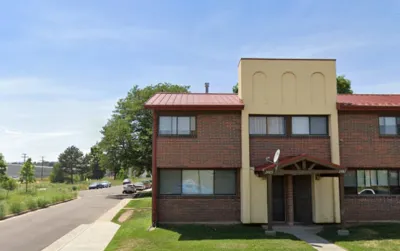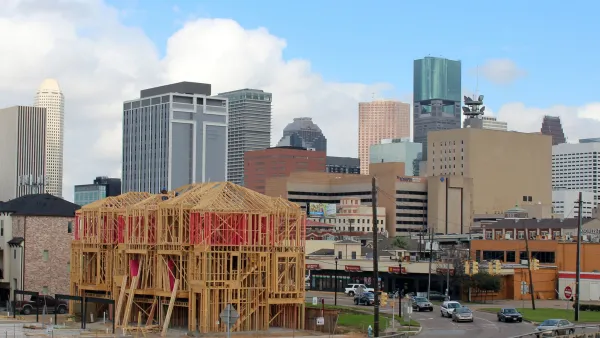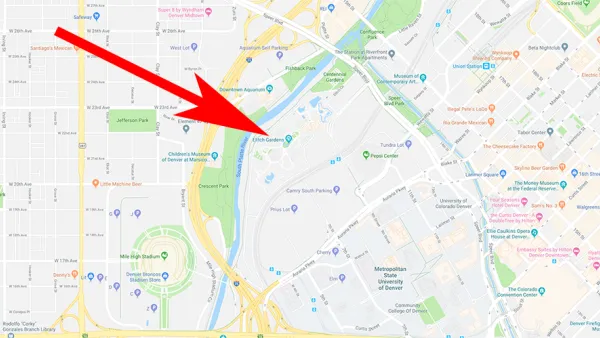One Denver neighborhood’s massive redevelopment project includes a branding element. Is it necessary?

Place branding, while controversial, is nothing new. Cities and neighborhoods frequently employ branding and marketing strategies to stimulate their economy, attract visitors and businesses, and generally boost their profile. Writing in Fast Company, Elissaveta M. Brandon describes the rebranding process occurring in one Denver neighborhood, questioning the utility of the project.
Denver’s Sun Valley, a formerly industrial zone, declined as the are was increasingly cut off from the rest of the city by railroads and freeways. “In 2010, about 27 homes remained, and five of them were vacant. Nearly 80% of Sun Valley residents lived below the poverty line.” Then, the Denver Housing Authority (DHA) “set out to redevelop the neighborhood by demolishing the almost hundred-year-old housing projects, building new subsidized and free-market housing units, and investing in a public park, a community garden, a community-operated supermarket, a job training center—and a visual identity for the renewed neighborhood.”
But the project came at a cost, which included displacing the 1,000 residents who lived in the apartments slated for demolition. As of May of this year, only 20 percent of former residents have returned to the neighborhood. “The residents have gained better housing and better public amenities, but according to Collective Colorado, they have lost the tight-knit community they had built.”
As for the branding aspect, the vision created by design firm Wunder Werkz, inspired by the cultural diversity of the neighborhood, is still a work in progress. “Wunder Werkz has essentially created an easy-to-use, flexible kit of parts with a clear hierarchy and set of rules that the community can reference and use when construction is complete, or whenever they need it.”
FULL STORY: One of Denver’s poorest neighborhood got a rebrand. Did it need it?

National Parks Layoffs Will Cause Communities to Lose Billions
Thousands of essential park workers were laid off this week, just before the busy spring break season.

Retro-silient?: America’s First “Eco-burb,” The Woodlands Turns 50
A master-planned community north of Houston offers lessons on green infrastructure and resilient design, but falls short of its founder’s lofty affordability and walkability goals.

Delivering for America Plan Will Downgrade Mail Service in at Least 49.5 Percent of Zip Codes
Republican and Democrat lawmakers criticize the plan for its disproportionate negative impact on rural communities.

Test News Post 1
This is a summary

Test News Headline 46
Test for the image on the front page.

Balancing Bombs and Butterflies: How the National Guard Protects a Rare Species
The National Guard at Fort Indiantown Gap uses GIS technology and land management strategies to balance military training with conservation efforts, ensuring the survival of the rare eastern regal fritillary butterfly.
Urban Design for Planners 1: Software Tools
This six-course series explores essential urban design concepts using open source software and equips planners with the tools they need to participate fully in the urban design process.
Planning for Universal Design
Learn the tools for implementing Universal Design in planning regulations.
EMC Planning Group, Inc.
Planetizen
Planetizen
Mpact (formerly Rail~Volution)
Great Falls Development Authority, Inc.
HUDs Office of Policy Development and Research
NYU Wagner Graduate School of Public Service




























